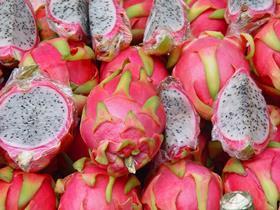
Vietnam’s Plant Protection Department (PPD) has moved to sure-up the country’s economic interests and its people.
According to a report published by Saigon Giai Phong, the PPD will closely inspect and monitor agricultural facilities issued with a Production Unit Code (PUC) that provide fresh produce for exports.
Currently, produce from areas and facilities with a valid PUC can be exported to countries and regions that have signed trade agreements with Vietnam. These include the US, the EU, Australia, Japan, Korea, and China.
Vietnam’s Ministry of Agriculture and Rural Development has included Article 64 in the Law on Crop Production regarding the management of PUC and assigned the Vietnam PPD to develop domestic standards on monitoring areas with PUCs.
In 2020, the National Office of Intellectual Property of Vietnam issued a decision to grant geographical indication certificates for many domestic agricultural products, which are also registered for trademark in some foreign countries.
The inspection of farmyards and packing facilities with already-issued PUCs, as well as sending requests for new PUCs, are mainly carried out by local inspectors.
However, Saigon Giai Phong reports the inspection and supervision of farmyards and packing facilities with PUCs have been very lax in some localities. There are also indications that some exporting companies have used incorrect codes or have been stealing other companies’ codes to export their goods.
The General Administration of Customs of China (GACC) reported in June 2020 that approximately 3,300 tonnes of mango exported to China in 2019 and 2020 violated multiple plant safety regulations.
As a result, relevant Chinese agencies requested to suspend the mango exports from 12 Vietnamese farmyards and 18 packaging facilities to investigate and come up with appropriate remedies.
The overall goal of the allocation, management and monitoring of a PUC-issued planting areas is to ensure traceability back to the original source to determine the pest control methods and fertilisers.
Especially, demanding markets such as the EU, the US, New Zealand, and South Korea have specific regulations shown in documents on import conditions or implementation plans for each type of agricultural product. Up to now, 998 PUCs have been granted to Vietnam by the above markets.
China in particular receives up to 4m tonnes of fresh fruit exports from Vietnam every year, so any legitimate export must come from orchards and packaging facilities with PUCs issued by the Ministry of Agriculture and Rural Development of Vietnam and approved by the GACC, applicable from 2019.
As of August 2020, 47 provinces have been granted 1,735 PUCs for over 180,000ha of orchards with nine fruit varieties, and 1,832 PUCs for official export packing facilities.
PROMOTIONAL PUSH
Saigon Giai Phong is also reporting Vietnam’s deputy Prime Minister, Trinh Dinh Dung, has approved the National Industrial Promotion Programme for 2021-2025.
The programme aims to support 350 rural establishments to apply for trademarks, among other industrial applications.
According to the Department of Crop Production (under the Ministry of Agriculture and Rural Development), the Mekong Delta provinces have more than 362,000 hectares of fruit trees, accounting for more than 34 per cent of the total national area.
These provinces provide the market with over 4m tonnes of fruit for export and domestic consumption each year.



